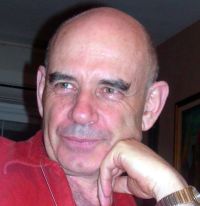Bentin's death marked the second time in the past 10 years that a cyclist was killed in Berkeley, according to police. Bicycle collisions are far more common, especially on the congested downtown streets south of the campus where Bentin was killed, according to the The Bay Citizen Bike Accident Tracker. The tracker maps bike crashes that occurred between 2005 and 2010.
During that five-year period, there were 819 bike crashes in Berkeley, the fourth-highest count of any Bay Area city. There were five or more collisions at nine intersections in the downtown area, including one near where Bentin died, according to the data. Drivers making improper turns and cyclists riding too fast were among the most frequently cited causes of those crashes, according to police reports.
Berkeley, the 11th-largest city in the region, has one of the highest bike commuter rates in the nation, according to the U.S. Census Bureau. About 8 percent of Berkeley residents commute by bike.
Over the years, the city has taken steps to make commuting by bike safer, including establishing "bicycle boulevards," designated side streets with less traffic and more room for cyclists. But bike advocates say the city needs to do more, especially near campus.
“Cal is bike central in the East Bay,” said Dave Campbell, program director for the East Bay Bicycle Coalition. “In the downtown area, we’re always going to have a lot of people, a lot of cars and a lot of conflicts. So when you have that, you have to reduce the speeds to 20 miles or less, or what we call ‘human speeds.’ ” Currently, the speed limit in downtown Berkeley is 25 mph. Campbell said the bike coalition wants to see a two-way bike lane built around the perimeter of campus so that cyclists wouldn’t have to mix with car traffic as much.
Campbell also suggested that the city could slow traffic and prevent bike crashes by replacing traffic lights at some downtown intersections with stop signs.
“Perhaps more of a European concept that streets are places rather than a means of moving people,” Campbell said. “The function of moving traffic should be a lower priority.”
Farid Javandel, the city of Berkeley's transportation division manager, said replacing traffic lights with stop signs isn’t feasible.
“With the volume of traffic on Shattuck, you would have a crazy traffic backup,” he said.
He said the city rejected a two-way bike lane for the north side of campus because there wasn’t enough room for the lane as well as pedestrians and bus stops.
But Javandel said the city soon will add flashing lights to intersections where bicycle boulevards cross major thoroughfares, such as Virginia Street and Shattuck Avenue, to signal that a cyclist is approaching.
The city is also considering installing a left-turn box for bicyclists at the intersection of Oxford Street and Hearst Avenue, according to Javandel. Such a box would allow cyclists to pull in front of cars at a stoplight in order to make a left-hand turn more safely.
Cyclists say it’s not just road design, but also road conditions that bother them.
But city officials and cycling advocates say that without knowing exactly what caused Bentin’s crash, they don't know what changes could have prevented it. For now, a “ghost bike,” painted white, marks the spot where he died.
This story was produced by The Bay Citizen, a project of the Center for Investigative Reporting. Learn more at www.baycitizen.org.
 Shlomo Bentin, a world-renown neuropsychologist, bought a bicycle last summer to commute to UC Berkeley from his home two miles away. An expert on facial recognition, the 65-year-old Israeli was on a one-year research sabbatical at the university.
Shlomo Bentin, a world-renown neuropsychologist, bought a bicycle last summer to commute to UC Berkeley from his home two miles away. An expert on facial recognition, the 65-year-old Israeli was on a one-year research sabbatical at the university.